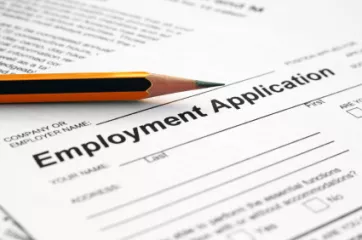The long-term implications of the unemployment data aren't clear yet. However, the trend should make us pause. Today's labor market and the economy are both in worse shape than official numbers lead us to believe.
This article was originally published in The Washington Examiner
One of the most reported and anticipated numbers in Washington is the unemployment rate. Currently, the official unemployment rate stands at 8.1 percent. Each month, this number is calculated by taking the number of people without jobs who are available to work and actively sought jobs in the four weeks preceding, divided by the total number in the labor force.
Although this official rate remains the most commonly reported measure of labor market performance, it isn't necessarily the most realistic representation of the current state of the economy. For instance, the official unemployment rate doesn't account for Americans who have given up looking for work. This means that the 8.1 percent unemployment rate, and its slight decline since January, may not be a sign of recovery at all. When discouraged workers fall off the unemployment rolls, the unemployment rate looks artificially lower.
Also not counted as unemployed are the so-called "marginally attached workers." These are individuals available for work who may have looked for a job in the prior 12 months but were not looking in the four weeks preceding the employment survey. Another group not counted is those employed part-time for economic reasons (because their hours have been cut back, or because they are unable to find a full-time job). They are not counted in the unemployment rate, either.
When we account for these categories of workers, we get a more accurate measure of the labor market climate -- and it's not a good one. The Bureau of Labor Statistics includes these groups in its more accurate alternative measures to the unemployment rate. When you add them all up, they have consistently been above 10 percent since June 2008. Include all of these categories, and unemployment stands above 14 percent.
Obviously, an unemployment measure that includes more categories will show up as a higher number. But for years, the gap between the alternative and the official unemployment rates has remained below 4 percent. This has changed in the current economy. My colleague Jason Fichtner and I have recently calculated that as unemployment surged in the beginning of 2008 and 2009 by twice the average annual rate from the previous three years, the gap between the alternative and official rates also grew larger. This gap grew to 6 percent by the end of 2008, 7 percent by the end of 2009, and peaked at 7.4 percent in 2011.
This trend is driven in large part by the dramatic drop in the labor force participation rate, to its lowest level in nearly 30 years. According to Mercatus Center's Keith Hall, "The decline has been equivalent to 2.6 percent of the population," or 6.3 million. If these people don't come back to the work force eventually, it could stunt economic growth.
Also, depending on who's dropping out, this could add to our existing fiscal challenges. In a recent paper, the Atlanta Fed's Julie Hotchkiss finds that while the share of retirees among those not in the labor force has remained constant, the number giving "school" as a reason for dropping out has dramatically increased. They now make up 18 percent of the nonparticipants.
This would be good if these people were to eventually return to the labor force with high-skilled jobs and add to economic growth. However, it seems more likely that the rise among those going to school is mostly the result of the current education bubble, driven by government-backed student loans. As more and more students graduate with large debts and few job prospects to pay them off, taxpayers will become more likely to pick up the tab for underpaid student loans.
Lastly, there is an important underreported fact: Women are the ones who most often give up looking for a job. Last month the overall civilian labor force declined by 164,000, with the entire net decline coming from women -- male participation actually grew.
The long-term implications of the unemployment data aren't clear yet. However, the trend should make us pause. Today's labor market and the economy are both in worse shape than official numbers lead us to believe.
